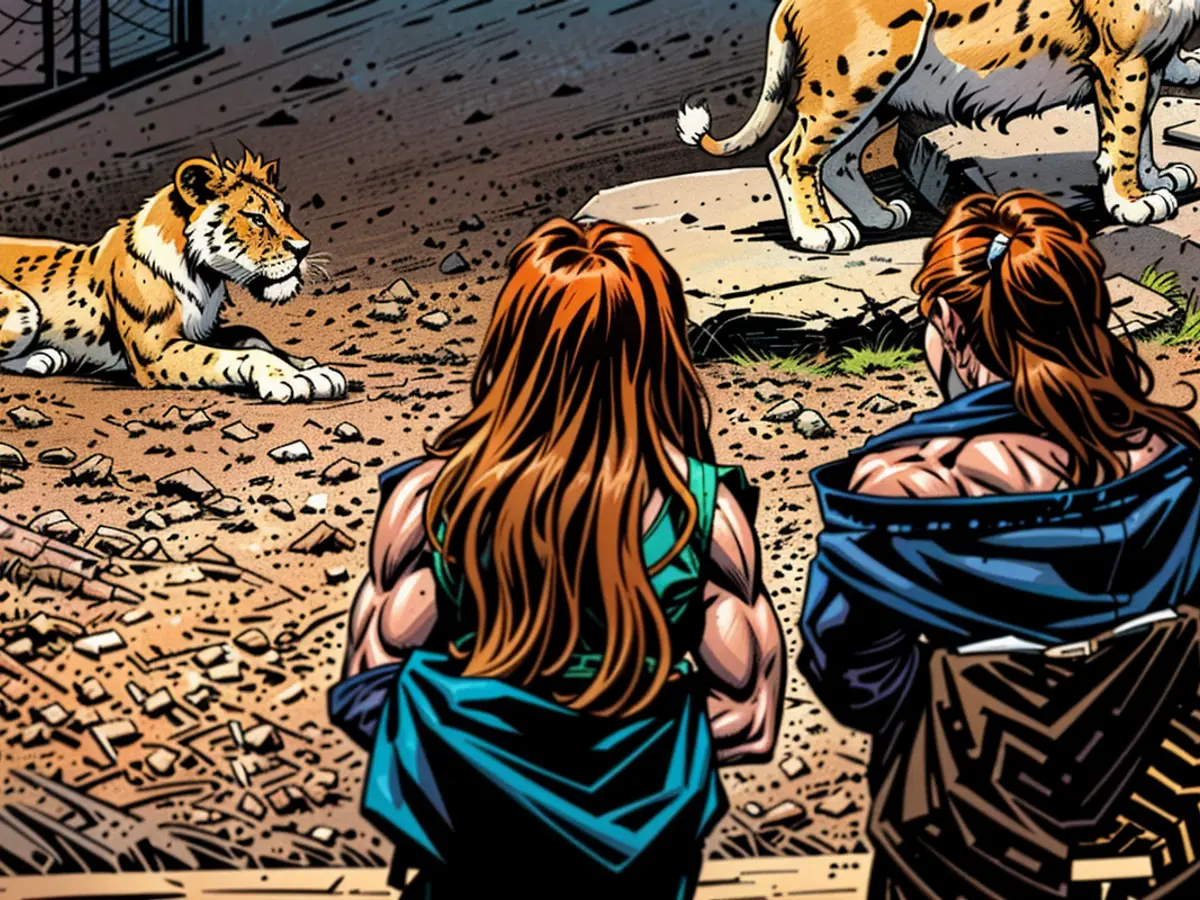youth - Baby lion born in Schwerin Zoo
Half a year after her last litter, lioness Indi at the Schwerin Zoo has given birth to new offspring. The cub was born on the night of Tuesday and has successfully passed the critical first hours, the zoo announced. About an hour after birth, Indi nursed her cub for the first time, as seen on the surveillance camera in the den. The first medical check-up and determination of the cub's sex is expected to take place in about the 8th week.
"We're very pleased, as everything so far indicates a healthy cub, and Indi's interaction with her cub is as expected," said zoo director Tim Schikora. It's now crucial that both mother and baby make it through the next few weeks. "Around 3 months, one can assume that the cub is stable and out of the woods," explained Schikora.
Indi's first son adopted by aunt
Just last November, the 12-year-old Indi gave birth to a male cub named Tarak. Her first litter from May 2023 did not survive, with only Tarak making it through.
According to Schikora, Indi failed to adequately care for Tarak after a few months, so her sister, who is raising two slightly older cubs, took over nursing duties. "That's how a pride should function in such cases," said the zoo director, satisfied with the lions' family life.
Mother and cub will spend the next few days alone to build their initial bond undisturbed. Access by caretakers will also be reduced. In a next step, the cub could meet the rest of its pride through a so-called contact slider, the zoo added. Father Shapur and the rest of the pride, including last year's three cubs, are located on the outdoor facilities and in the winter garden.
Breeding program for Asian lions
The Asian lion kept in Schwerin resembles the African lion but is slightly smaller. The Schwerin lions are part of the European Association of Zoos and Aquaria's breeding program. With its current eight animals, the Schwerin Zoo claims to have the fourth-largest Asian lion pride in the world - after zoos in India, Singapore, and Denmark.
The lion subspecies is classified as critically endangered by the World Conservation Union (IUCN). It is believed that only about 350 wild individuals remain in the Indian Gir National Park. Originally, the species was distributed as far as the Mediterranean region.
The newborn cub, despite its early days, is showing signs of being robust, with its heavy breathing being a normal indicator of a healthy lion cub. The zoo's team is Hopeful that Indi's motherly instincts will be stronger this time, given the heavy responsibility of raising another cub.








